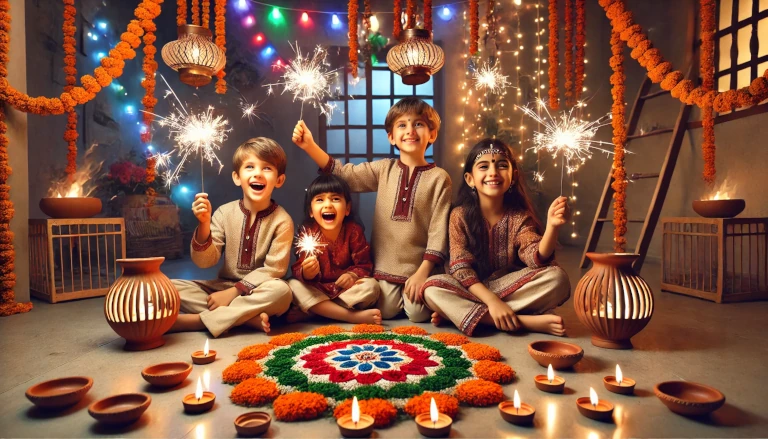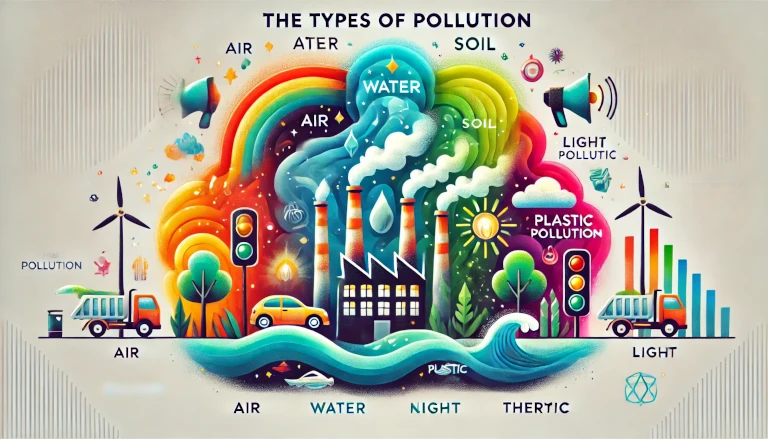Diwali, the Festival of Lights, is one of the most cherished festivals in India. However, the traditional way of celebrating Diwali often leads to increased pollution levels due to firecrackers, excessive waste, and harmful emissions. With growing environmental concerns, many people wonder how they can still enjoy Diwali without contributing to pollution. The good news is, you can still have all the fun of Diwali while being eco-friendly 🌱! This blog will cover simple and effective ways to reduce pollution during Diwali while keeping the festive spirit alive.
🧨 What Causes Pollution During Diwali?
The primary sources of pollution during Diwali include:
- Firecrackers: The loud noise and harmful chemicals released by firecrackers contribute significantly to air and noise pollution.
- Waste from Decorations: Plastic decorations, synthetic rangoli colors, and other non-biodegradable materials add to landfill waste.
- Increased Energy Consumption: Using excessive lighting increases electricity consumption, especially if energy-efficient options are not used.
- Non-Eco-Friendly Practices: Practices like burning synthetic materials and using chemical-based colors for rangolis worsen the environmental impact.
✨ How Can You Celebrate Diwali Without Contributing to Pollution?
Here are some eco-friendly ways to reduce pollution during Diwali while still enjoying the celebrations:
- Switch to Green Crackers 🎆
If you love firecrackers, opt for green crackers. These are designed to emit 30-40% less harmful emissions than traditional crackers. Although not entirely pollution-free, they are a better alternative. - Use Organic and Natural Decorations 🌿
Instead of plastic or synthetic decorations, choose eco-friendly alternatives. You can use:
- Fresh flowers and leaves for garlands
- Natural rangoli colors made from rice flour, turmeric, and flower petals
- Diyas made of clay instead of electric lights to reduce electricity consumption.
- Go for LED Lights 💡
LED lights consume far less energy than traditional incandescent bulbs. This reduces your energy consumption, contributing to a more eco-friendly Diwali. - Compost After the Celebrations 🌱
If you use flowers and leaves for decorations, make sure to compost them after the festival. This way, you reduce waste and give back to nature. - Gift Eco-Friendly Presents 🎁
Instead of giving sweets wrapped in plastic or using non-recyclable materials, choose eco-friendly gifts like:
- Potted plants 🌵
- Sustainable products made from bamboo or jute
- Homemade sweets in reusable packaging
Benefits of Celebrating an Eco-Friendly Diwali 🎉
- Reduces Air and Noise Pollution: Green crackers and alternatives to traditional firecrackers significantly lower harmful emissions, improving air quality.
- Saves Energy: By using LED lights and traditional clay diyas, you reduce your energy consumption, leading to lower electricity bills.
- Less Waste: Switching to natural and reusable materials for decorations leads to less non-biodegradable waste, reducing your impact on landfills.
- Promotes Health: By reducing pollution, you protect the health of your family and neighbors, especially those who suffer from asthma or respiratory issues.
- Conserves Resources: Sustainable practices ensure fewer natural resources are wasted during the festival.
🔍 Common Questions About Eco-Friendly Diwali:
- Why should I switch to green crackers?
Green crackers are designed to reduce emissions by using eco-friendly chemicals. They still produce noise and light, but with fewer pollutants. - Where can I buy eco-friendly Diwali decorations?
You can find eco-friendly products online or at local stores that focus on sustainability. Organic colors, clay diyas, and biodegradable decorations are readily available during Diwali. - How much do eco-friendly Diwali products cost?
Eco-friendly products are often competitively priced. For instance, clay diyas are inexpensive, and natural rangoli colors can be made at home, making them cost-effective. LED lights, while slightly more expensive upfront, save money in the long run due to lower energy consumption. - When should I start preparing for an eco-friendly Diwali?
It’s best to plan ahead, a few weeks before Diwali. This allows you to source eco-friendly products and make conscious decisions about how you will celebrate. - What are the disadvantages of traditional firecrackers?
Traditional firecrackers release harmful chemicals like sulfur dioxide and nitrogen oxides, contributing to air pollution. They also produce a loud noise, causing discomfort to animals and people, especially those with health issues.
📊 Cost Benefits of Celebrating an Eco-Friendly Diwali
Although some eco-friendly products like LED lights may seem more expensive upfront, they offer long-term savings. For example:
- LED lights use 75% less energy than incandescent bulbs, leading to significant savings on your electricity bill.
- Clay diyas are affordable, reusable, and add a traditional touch to your celebrations, reducing the cost of electric lighting.
- Homemade decorations using natural elements like flowers and leaves are cost-effective and can be composted after use.
Examples of Eco-Friendly Diwali Celebrations
- The Green Diwali Movement 🌱
In recent years, several communities across India have promoted “Green Diwali,” where the focus is on celebrating without harming the environment. Schools, NGOs, and government bodies have actively campaigned to spread awareness about the benefits of an eco-friendly Diwali. - Solar-Powered Diwali Lights 🔆
In some parts of India, families are opting for solar-powered string lights, which charge during the day and light up the home at night without using grid electricity. - Zero-Waste Diwali 🛍️
Some eco-conscious families are practicing zero-waste Diwali by using only reusable and biodegradable materials for decorations and gifts. Wrapping gifts in fabric or jute bags, for example, eliminates waste and looks beautiful.
How to Enjoy a Pollution-Free Diwali Without Sacrificing Fun
Celebrating an eco-friendly Diwali doesn’t mean compromising on the fun and joy of the festival. By making small changes—like using natural decorations, switching to LED lights, and choosing green crackers—you can significantly reduce pollution and still enjoy all the traditions of Diwali. Plus, an eco-friendly Diwali is not only good for the environment but also promotes health and well-being. This year, let’s pledge to celebrate a cleaner, greener Diwali that is joyful for everyone!
Discover more from Green Ecosystem - Renewable Energy, Agriculture, and Environmental Sustainability
Subscribe to get the latest posts sent to your email.


